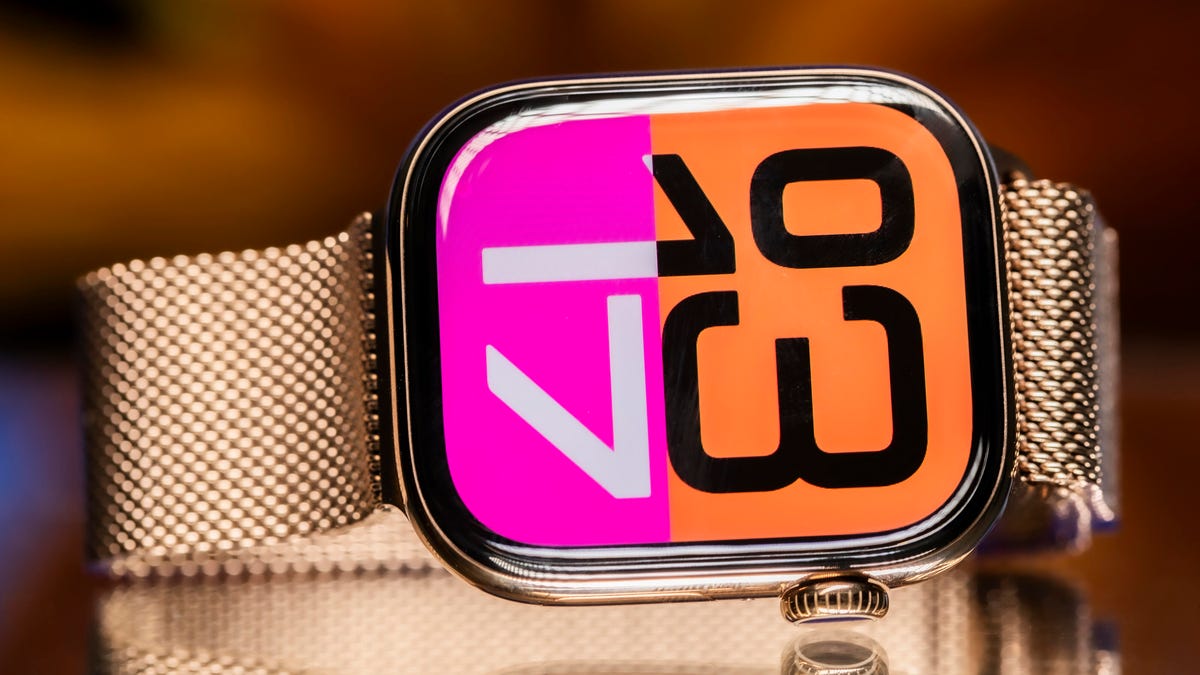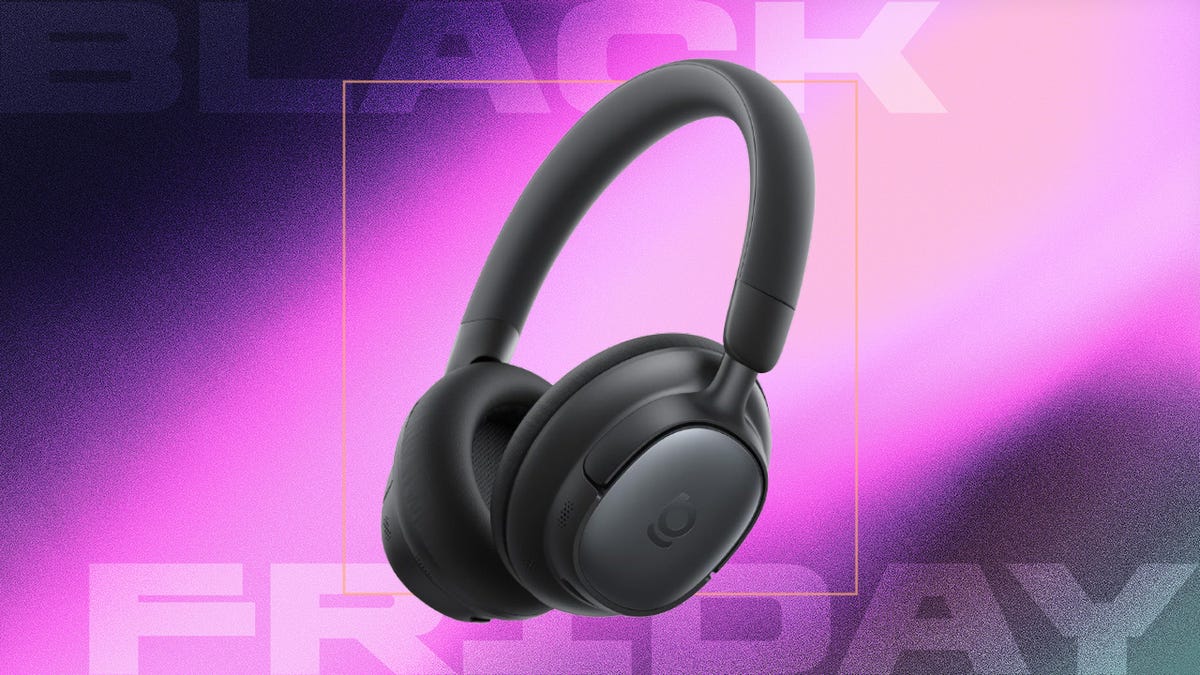Technologies
Apple Watch Series 11: What the Rumors Reveal About Apple’s Smartwatch Future
In-screen cameras, foldable screens, blood pressure tracking — we round up all the rumors surrounding Apple’s next-gen smartwatches, even beyond the Series 11.

The next Apple Watch (or watches) are months away from making their public debuts, but the rumors are already buzzing about what could be coming to the following generations of watches. From foldable displays to in-screen cameras and advanced health sensors, we’re breaking down the most likely —and the most far-fetched— Apple Watch predictions.
Apple Watch Series 11 release date
Unless there’s a massive glitch in the universe, I have it on good authority that we can expect the Apple Watch Series 11 this September, alongside the rumored iPhone 17. Apple has consistently announced a new Apple Watch every year since its 2014 debut. Except for the first-gen model, they all launched at the yearly iPhone event in September.
What’s less predictable is the release date. Traditionally, the new model goes on sale anywhere from a few days to a couple of weeks after the keynote (which is what we expect for 2025), though recent years have seen delays due to production issues. It’s also unclear how newly imposed tariffs will affect the new watch’s launch and price in 2025.
The Apple Watch Series 11 will follow last year’s Apple Watch Series 10, which earned a CNET Editor’s Choice Award. Apple sells other models too, like the Apple Watch Ultra 2, which came out in 2023 and the Apple Watch SE, which dropped in 2022. While Apple doesn’t say anything about future products, we are fortunate that there are numerous rumors for all Apple Watch models. Here’s what leakers and Apple analysts say we can expect for the next Apple Watch(es).
How many Apple Watches will we get this year?
We’re definitely getting a Series 11, and there’s a good chance we’ll see an updated Ultra and SE model, according to a report from Bloomberg’s Apple analyst Mark Gurman. The Apple Watch Ultra and the cheaper SE line haven’t exactly followed a predictable upgrade cycle, but last year’s absence could prove a strong clue that 2025 could be the year we get all three again. The Series 10 took the spotlight in 2024 as the only smartwatch announced that year.
Apple Watch design
With last year’s redesign still fresh, the Series 11 will likely look similar to the Series 10 and feature the same large edge-to-edge screen (still 42mm and 46mm) that’s brighter, lighter and thinner bezels than its predecessors. Any design tweaks would probably be minor and driven by new technology under the hood.
According to MacRumors, the Apple Watch might get a more energy-efficient screen, maybe an LTPO display with higher resolution and better brightness, which, on paper, could help improve the battery life. This could be reserved for the higher-end Ultra 3, which will likely otherwise keep its original design.
The more adorable SE, however, could see a more extensive design overhaul. It would still have the body of the Series 8 and, according to Gurman, get several upgrades from the Series 10, like an always-on display.
Apple Watch processor
Apple typically bumps up the processor with every new smartwatch, so we should see an Apple S11 chip this time around for at least the Series 11 and Ultra 3. The Ultra 3 is also rumored to get satellite connectivity and 5G support, but according to Gurman, these features likely won’t make it to the Series 11. Considering last gens’ upgrade cycle, my personal bet would also be on the SE getting a processor bump up to the S9 chip, currently found in the Ultra 2 and the Apple Watch Series 9.
Apple Watch battery
If there’s one thing on everyone’s wishlist, it’s better battery life. The Series 10 introduced faster charging — 0% to 80% in just 30 minutes compared with 90 minutes on previous models — but there’s room for improvement in battery capacity itself.
While there aren’t any rumors indicating that new Apple Watches will get a longer battery life, I truly hope Apple addresses the battery because its smartwatches are falling behind. Some Android models use dual chipsets to divide tasks and optimize battery life. I’d like to see Apple adopt a similar strategy and finally push battery life to two full days on a single charge for regular models. I hope the Ultra, which currently gets a full 72 hours on a charge, gets the faster charging and pushes its battery life limits to four full days.
Apple Watch price
Based on current pricing, the Apple Watch Series 11 could cost $399 for the 42mm aluminum version and $429 for the 46mm version, with upgrades for cover material and LTE connectivity costing extra. That is unless recently enacted tariffs play a part in pricing this year, which remains to be seen. The other question is what the most expensive variant will be — solid gold, diamond-encrusted Hermès, anyone?
Apple Watch health and fitness upgrades
There’s been a persistent rumor about blood pressure tracking finally making its way to the Apple Watch, but it’s unclear when it will be ready. According to March report from Gurman, Apple has already been testing the feature in its smartwatch but has run into problems. Other wearables health companies like Omron and Med-Watch have proven it’s possible to measure blood pressure from the wrist, but adding this feature would likely require new sensors and a bulkier design. It would also be less precise than dedicated health devices like Omron’s and measure baseline metrics like the Galaxy Watch 7 and Ultra (which isn’t supported on Samsung watches in the US).
Glucose monitoring has also been thrown in the mix, but according to Gurman, that would be even further down the line. Lastly, the blood oxygen (SpO2) feature that debuted on the Series 6 likely won’t be making a comeback this year as Apple is still navigating legal issues related to it.
Additional future Apple Watch surprises
There’s another rumor floating around that the Apple Watch could get a camera — not for selfies (this isn’t 2015, after all) but for AI-based image recognition. With the release of Apple Intelligence, Apple introduced a visual search tool on the iPhone that uses the camera to provide relevant information about objects and places.
According to a report by Gurman, Apple is exploring this option, and even if the company decides to move forward with the technology, it likely wouldn’t make its way to the Apple Watch until the 2027 models. While it’s not expected for this launch, it could hint what kind of AI integration will arrive with WatchOS 12. By contrast, WatchOS 11 lacks any Apple Intelligence features.
WatchOS 12 may also give us clues about the direction Apple is taking with Apple Intelligence on the Watch and could hint at new hardware features as well. The new operating system is expected to be unveiled at Apple’s annual developers conference, WWDC 2025, which is scheduled for the week of June 5.
An even further fetched clue hints at a foldable Apple Watch with two cameras. A recent Apple patent, first uncovered by Patently Apple, and published by the US Patent and Trademark Office in March, details an Apple Watch design featuring a foldable screen and another with a dual-screen display that either folds or slides out. The additional screens could give the Apple Watch more real estate to expand its functionality and make it less reliant on the iPhone. The same patent also points to the possibility of two cameras on this dual-screened watch for either AI processing or video calls. Apple often files patents well before any related technology appears in an actual product, so even if this concept does live to see the light of day, we’re not expecting it to make its public debut anytime soon.
Technologies
Here’s How Much Tesla’s New Affordable Electric Cars Cost
What do you get with the stripped-down Model Y and Model 3? A lower price, for starters.
Technologies
This New Car Feature Uses AI to Keep You From Missing Your Exit
Google Maps’ live lane guidance is being integrated into Polestar’s head-up display.
Technologies
Hurry to Nab the Baseus Bowie MH1 Headphones for Over Half Off With This Early Black Friday Deal
This deal drops the price of this premium pair to just $47, but this discount ends soon.

High-quality noise-canceling headphones can cost a pretty penny, especially if you are after adaptive ANC, all-day comfort, and a reliable battery life. Most options with all these features sit well over $100, but we just found a way to score a premium pair for less than $50.
Amazon has a solid early Black Friday deal on the Baseus Bowie MH1 headphones. You can get them for 20% off right now, which drops the price to $80. But stack that with the $25 on-page coupon and use the promo code 8JWTGEUN at checkout, and you slash another $33 off. That brings the final price down to just $47, which is a steal considering all the features you are going to enjoy.
The headphones come with cloud-soft protein leather earcups with resilient memory foam for cloud-like comfort. The pair is capable of blocking up to 99.8% of noise with –48 dB deep noise cancellation, and it adapts to your surroundings as needed.
Hey, did you know? CNET Deals texts are free, easy and save you money.
The 36mm drivers and full-range LCP diaphragms give you clear, rich sound no matter what you listen to. In addition, with Baseus Immersive Spatial Acoustics, the audio surrounds you for a more natural listening experience. For clearer calls, the headphones also pack 5-mic sound sensors with AI-powered voice enhancement and wind-noise reduction. You won’t have to repeat yourself constantly.
Battery-wise, you get up to 80 hours of playtime with ANC off, and 55 hours with it on. A quick 10-minute top-up can also get you up to an additional 10 hours of playback, which is great for when you’re out and about.
HEADPHONE DEALS OF THE WEEK
-
$200 (save $151)
-
$199 (save $150)
-
$329 (save $100)
-
$328 (save $72)
Why this deal matters
High-end audio gear doesn’t come cheap. This deal takes over 50% off a powerful pair of headphones, making the upgrade easy. It won’t last long, though, so it’s best to snap it up sooner rather than later.
Join Our Daily Deals Text Group!
Get hand-picked deals from CNET shopping experts straight to your phone.
By signing up, you confirm you are 16+ and agree to receive recurring marketing messages at the phone number provided. Consent is not a condition of purchase. Reply STOP to unsubscribe. Msg & data rates may apply. View our Privacy Policy and Terms of Use.
-

 Technologies3 года ago
Technologies3 года agoTech Companies Need to Be Held Accountable for Security, Experts Say
-

 Technologies3 года ago
Technologies3 года agoBest Handheld Game Console in 2023
-

 Technologies3 года ago
Technologies3 года agoTighten Up Your VR Game With the Best Head Straps for Quest 2
-

 Technologies4 года ago
Technologies4 года agoBlack Friday 2021: The best deals on TVs, headphones, kitchenware, and more
-

 Technologies4 года ago
Technologies4 года agoVerum, Wickr and Threema: next generation secured messengers
-

 Technologies4 года ago
Technologies4 года agoGoogle to require vaccinations as Silicon Valley rethinks return-to-office policies
-

 Technologies4 года ago
Technologies4 года agoOlivia Harlan Dekker for Verum Messenger
-

 Technologies4 года ago
Technologies4 года agoiPhone 13 event: How to watch Apple’s big announcement tomorrow


